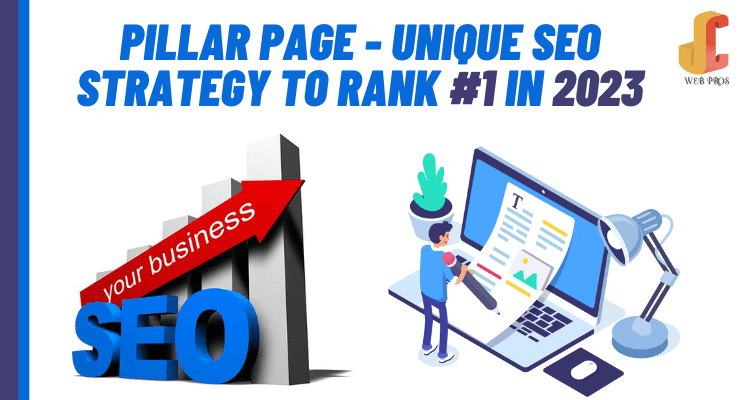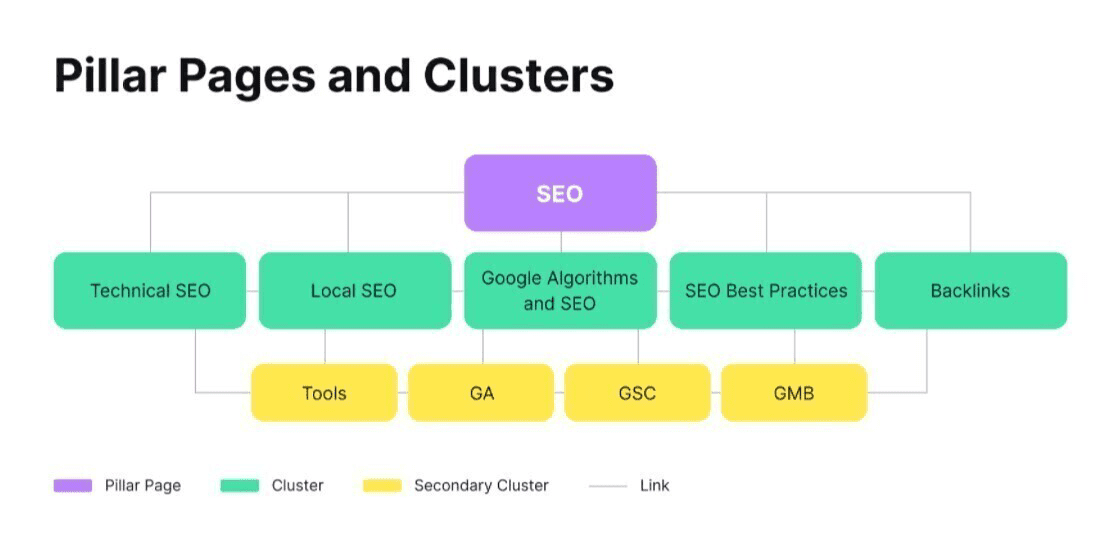Did you suffer a loss in the ranking? Is your SEO not performing as per the expectations? Still, struggling to get to #1 on Google?
Don’t worry! We’ll help you discover SEO strategies to outrank your competitors. Do you know 3.7 billion Google searches are conducted every day and 76% of all global searches take place on Google?
With such high competition on major search engines like Google, it is tough to survive on Page #1. As you know “Content is the King” and this is still applicable when it comes to search engine optimization. But are you following the right SEO Strategy? Is your Content well-planned?
In this blog, we’ll cover the well-organized content strategy “Pillar Page” and how it is effective to get you #1 on Google.
What is a Pillar Page?
A pillar page is high-level page content on the basis of which a topic cluster is built. A topic cluster is a collection of articles or blog posts on related topics within a subject that, when combined, provide a thorough understanding of that subject.
It provides a comprehensive overview of a particular topic via a ‘pillar page’ and leaves room for more detailed coverage of the topic in the ‘cluster pages’, which generally focus on a particular element of the topic, often a keyword.
The image below from similarweb.com correctly defines the Pillar Page Concept:
(Image Source – https://www.similarweb.com/blog/wp-content/uploads/2022/06/Blog-image-8-1024×1024.png)
Types of pillar pages
Generally, there are three main types of pillar pages:
The ‘What is’ pillar pages – e.g. What is SEO?
The ‘Guide’ pillar pages – e.g. Our Guide to SEO techniques
The ‘How to’ pillar pages – e.g. How to Write Blogs
Benefits of the Pillar page and Cluster Pages include:
- Increased engagement: Optimized and well-organized content makes it very user-friendly for viewers, driving up engagement.
- Longer session durations: As the pillar-cluster pages are interlinked, this arrangement tends to keep visitors on the site for a longer period, resulting in more engagement and page views.
- Provide better signals to Google: As pillar and cluster page groupings are well organized, it is easy for Google to determine their subject matter and rank them. Badly organized webpages tend to be poorly ranked by Google, so content organized by topic pillars and clusters tends to get rewarded with higher rankings.
What is the Significance of Pillar Pages in SEO Strategy?
– It assists you in arranging your content such that it serves as an engaging and in-depth source for your audience.
– It generates a good amount of organic traffic and enables you to outrank even the most competitive keywords without spending a fortune on link building.
– On the other hand, it also generates links of exceptional quality naturally.
– It gives your readers a better user experience as they can quickly discover the information in a more precise way.
– Helps to rank long tail keywords via cluster pages.
Example:
A pillar content page on ‘SEO’ might briefly touch on ‘technical SEO’ and then link to a cluster page that goes far more in-depth on the topic.
Refer to the image below for an example from semrush that correctly defines the above example for the Pillar-Cluster Page Concept:
(Image Source – https://static.semrush.com/blog/uploads/media/fe/80/fe809e1a6118992f34c9322b1139a2a7/image1.webp)
The cluster of topics or pages is hyperlinked with each other and with the pillar page as well. This forms a strong internal linking structure and is a great way to position you as #1 on Google.
How to Create Pillar Pages?
Step 1: Research the main topic based on the audience’s interest
Step 2: Finalize the keywords for the Pillar Page and the cluster topics by using Google Keywords Planner Tool
Step 3: Merge old posts to create new pillar pages or start from scratch. Create content for the Pillar Page and the related cluster pages. The content should be highly researched and unique.
Step 4: Check for Plagiarism or the duplicity of content using some online tool for plagiarism.
Step 5: Implement internal linking among the cluster pages and the pillar page.
Step 6: Promote the Pillar Page via external high authority websites or paid campaigns to your target audience.
Conclusion:
Pillar pages, also known as high-level content, offer a high-level overview of a specific topic. They provide readers with a one-stop shop for all of their information needs by linking to in-depth articles about specific subtopics.
SEO is an ongoing process and we should keep on updating the content with the latest information. The content should be built in such a way that it is meant for users’ interest. E-A-T (Expertise, Authoritativeness, and Trustworthiness) plays a crucial role when it comes to search engine rankings. Your website must have a contact and about us page. If Possible add your team’s information on your website. This will help strengthen the E-A-T factors. Add the author’s name and profile on the blog posts. Always remember to create content for your users and not for search engines. The aim of the pillar page should not be just to gain traffic but to improve user experience and share knowledge with your audience related to the main topic.
If you want to improve your SEO strategy, you must have pillar pages. Consider embedding pillar pages in your organized content system and see them act as a solid bridge for your target audience.






Share This Post :